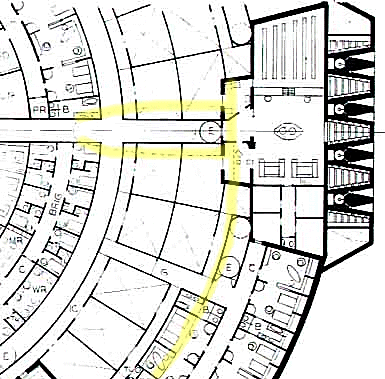@Timo - keep in mind that the engine rooms or engineering rooms do not need to look like the two standing engine room sets. "The Alternative Factor" shows us the energizer in "engineering". And there is also the various jefferies tube access points to presumably larger machinery behind the scenes in "The Naked Time", "The Doomsday Machine", "Courtmartial". And finally there is the antimatter service tube room that connects to the unseen antimatter containment system.
So, two of the large interior "engine rooms" would be the minimum but the "maze" would encompass much smaller rooms with their connecting corridors and access tubes and the behind-the-wall super machinery. IMHO

I second this; there is a minimum of two main engineering
control rooms, but lots of other engineering spaces and crawlways throughout the ship. In fact, intercom chatter in "Where No Man Has Gone Before" mentions a “deck 3 engineering” and depending how one interprets dialogue and scene editing, other engineering areas are possibly on deck 5, deck 7, deck 11, and deck 14. And these are just some of the ones that can be gleaned from TOS and TAS, but there are probably even more on a ship the size of the Enterprise?
As for Jefferies saying the engine room is in the engineering hull, we have to ask ourselves where then did Whitfield/Poe get the info for his
“The Making of Star Trek” to the effect that the main engineering control facilities were located in the impulse deck? The answer apparently, Gene Roddenberry! According to an erstwhile contributor to these forums
Cary L Brown (if memory serves) GR was going around conventions in the 70’s stating that this was where the engine room was located? So it’s a safe bet that GR is the ultimate source for both Whitfield’s, and in turn FJ’s, placement.
So what we have here are the two men most responsible for the design of the Enterprise favoring two different (but not mutually exclusive) locations for engineering control room(s). So make of this what you will.
But to get somewhat back on topic, since all “class one” starships have primary hulls (like the Ptolemy) but not all have secondary hulls, it makes sense that the engine room in the primary hull would be the standard primary control facility for all class one starships, with another facility in the secondary hull serving as an auxiliary (and/or dedicated to that
Engineering hull) for those ships that have one.




